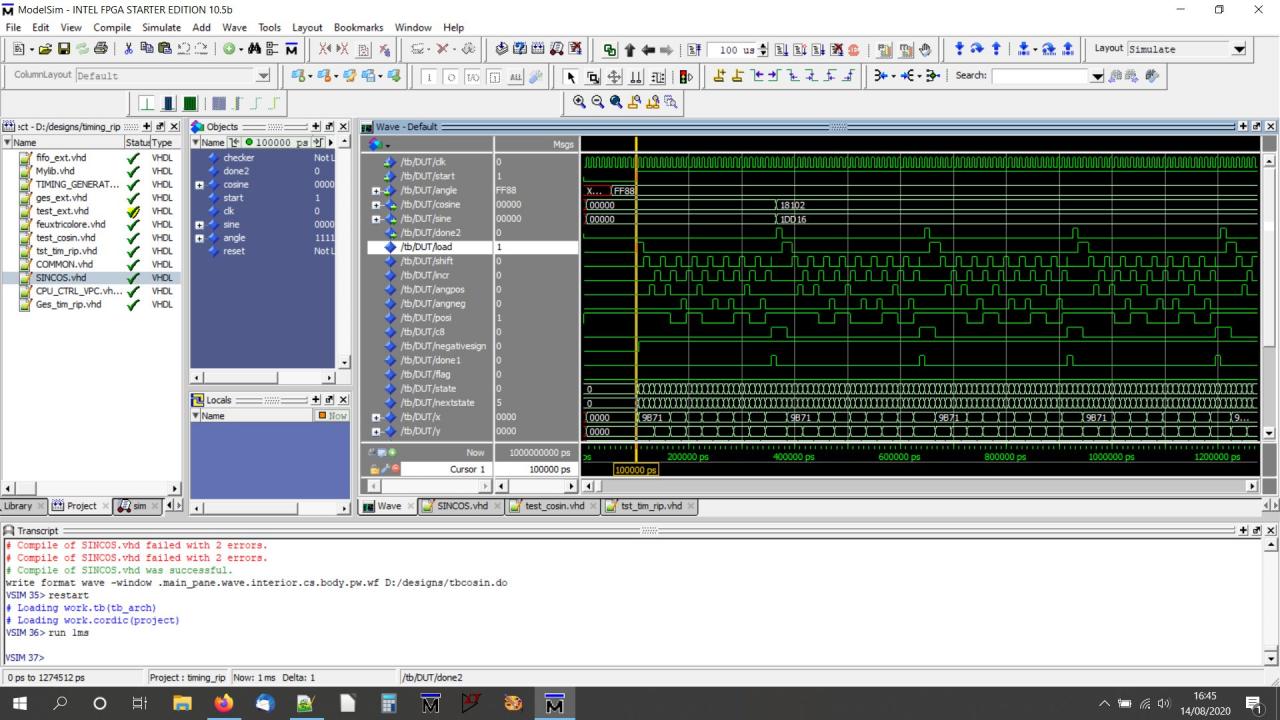Bonjour/Bonsoir;
J'essaye de concevoir un système qui permet de calculer le cos et le sin d'un angle donnée en langage VHDL. Cependant, en simulation des résultats pour l'angle -120 le simulateur affiche 2 valeurs pour le sin et 2 pour le cos. j'ai bien vérifié le testbench j'ai rien trouvé d'anomalie.
Est-qu'il y a parmi vous qui maîtrise le langage VHDL et le simulateur Modelsim et qui peut m'aider en m'indiquant le problème dans mon code.
J'ai pas arrivé à ajouter directement les fichiers dans la discussion, donc vous les trouverez sur [URL="http://www.mediafire.com/file/lmspk6x378phl3g/file"]
Je vous remercie.
-----




